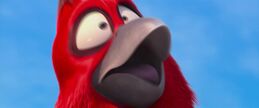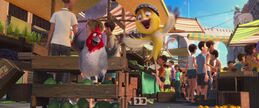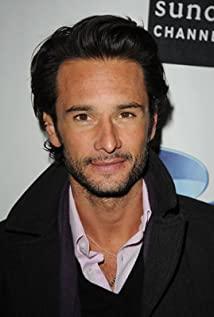"Three simple but extremely strong passions have dominated my life: the desire for love, the quest for knowledge, and the unbearable sorrow for human suffering." - Russell
with a favorable impression of "angry birds", with a pair of "ice Age" funny looking, with his wife last night to read "Rio", the domestic translated as "Rio Adventure", the good news is not pixar Works, otherwise it will be translated as "Birds" as usual, ha.
Although it is claimed to be the creation of the original team of "Ice Age", I found that "Rio" reveals far more profound connotations than "Ice Age". "Rio" is not like Fox's work, but more like Pixar's.
The first time I felt this way was at the beginning. I used a photo to describe the growth of Linda and Blue. The method is exactly the same as the beginning of Pixar's "Flying House". It is warm and harmonious, although the time will be shorter, listen carefully, and even have the soundtrack. somewhat similar.
What "Rio" made me realize more deeply is the portrayal of the characters. I can clearly feel that the creative team has deeply injected humanity and love into each character in the film. In fact, in recent years, many excellent cartoons abroad have devoted themselves to explaining love to people and conveying love. The biggest difference between cartoons and ordinary movies is that the characters in cartoons are always divided into love and hate, there are always good people and bad people, and the moral boundaries are obvious. This is because the most primitive audience of cartoons is children. For children, what should be loved and what should be hated, the film should establish a clear standard. With this kind of love-hate concept since childhood, as we grow up, we will gradually establish a correct social and moral concept.
As Russell puts it, his whole life was dominated by these three passions: the desire for love, the quest for knowledge, and the unbearable sorrow for human suffering.
What is love? Love is conveyed in many places in "Rio":
first, Linda's love for Blue, which runs through the whole play, is also the driving force for Linda to desperately want to find Blue.
Blue's love for Linda, in simple terms, is a pet to its owner, but it is actually love at a deeper level. It is the feeling of being needed. This feeling is similar to the feeling that the toys in "Toy Story 3" are needed by children. of.
Papa Woodpecker loves his family, telling a frustrated Blue near the end of the climax that he loves carnival, but he loves his family even more. It feels that the destination of life lies in that home. It was its little mango sweetheart who gave it a sense of security, its children gave it a sense of belonging and responsibility, and it was the family that gave it its security and stability. Even on the smuggler's plane, it lost confidence in the future and said, "I can't go back to eat today."
The friendship of the little birds, a group of little bird friends that Blue met in Rio de Janeiro, they had never known each other before, and they fought against the monkeys for the sake of loyalty and defended Blue and Jewel desperately.
The pursuit of knowledge is more manifested in Blue's several coupes, such as studying flying very seriously, reading "Principles of Flight" and testing the flight; in order to untie the iron chain tied to his feet, he made a big rock and designed a The agency's attempt to break the chain with a big rock; breaking the cage at the last minute also reflects Blue's wit. The parrot is known as the smartest bird, and the anthropomorphism of the cartoon gives Blue the human-like wisdom to the greatest extent. No wonder its owner runs the bookstore, and it naturally has the opportunity to read a lot of books. This bird is much smarter than most people.
And the unbearable sadness of human suffering as mentioned by Russell is also reflected in the film. Just as "Wall E" is accusing human beings of littering and destroying the earth's environmental protection theme, "Rio" is also accusing mankind of endless The land is killing birds and causing ecological destruction and species extinction. Blue is the last male blue macaw on the earth. The actions of the smugglers also reinforce the indictment.
In recent years, cartoons have tended to use animated characters to depict human nature. For example, the characters in Gu Long's novels show the glorious side of human nature, but also reveal the ugly side of human nature, write about the greatness of human nature, and also write about the sadness of human nature. This type of cartoon is not only suitable for children to watch, but also quite inspiring for adults. The cartoon also shows the moral concept of a country, the interpretation of love, and the distinction between justice and evil. In a word, if you want to understand the moral values of this country, you might as well watch their cartoons.
View more about Rio reviews











